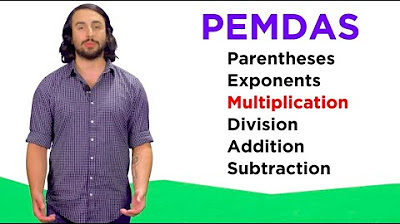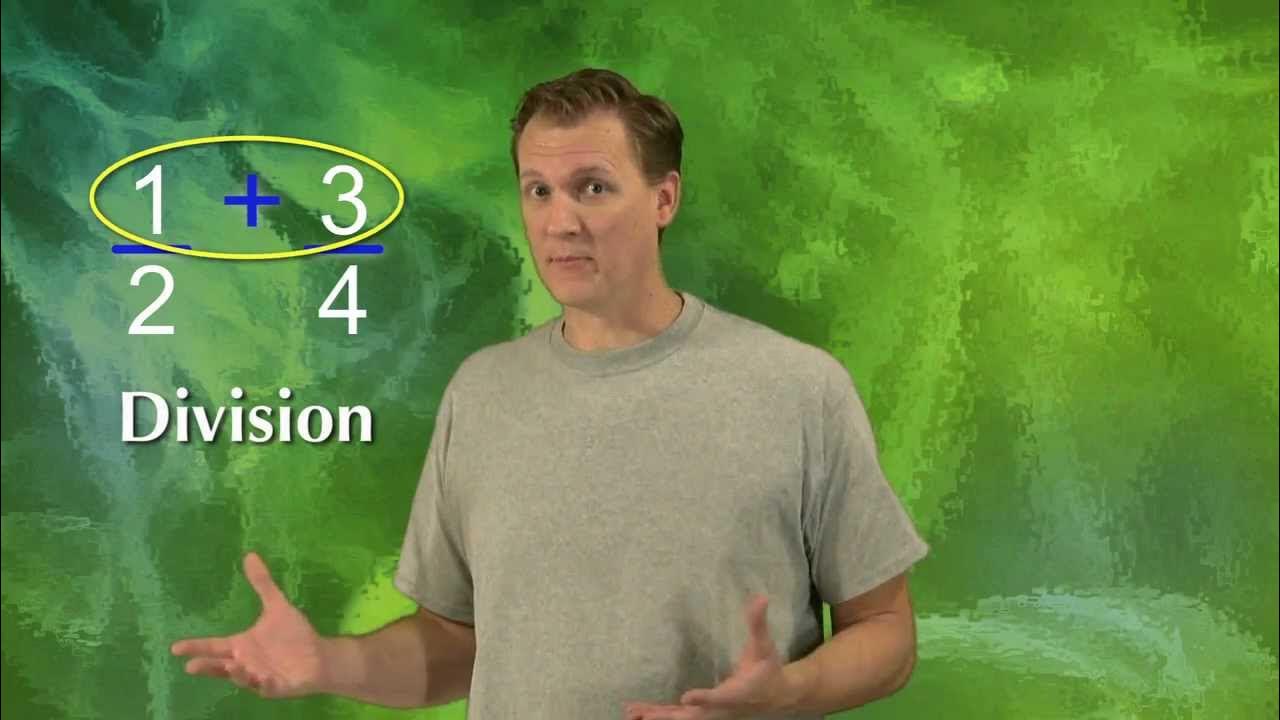a very simple algebra question , but 97% FAILED
TLDRIn this educational math video, the host invites viewers to solve a simple arithmetic problem involving addition, division, and multiplication. The equation presented is 2 + 2 / (2 * (1 + 1)). The host emphasizes the importance of following the correct order of operations, specifically the PMDMC method, which is widely recognized and used. The video encourages viewers to pause and attempt the problem themselves before revealing the solution. The host then systematically solves the equation step by step, starting with parentheses, followed by multiplication and division from left to right, and finally addition. The correct answer, according to PMDMC, is option C, which equals four. The video concludes with a reminder to prioritize multiplication and division before addition and subtraction, and to always start with parentheses.
Takeaways
- 😀 The video is about solving a simple math problem involving addition, division, and multiplication.
- 🧐 The problem presented is 2 + 2 / 2 * (1 + 1), which requires understanding of the correct order of operations.
- 🔍 The video suggests pausing to solve the problem independently before revealing the answer.
- 📚 The presenter introduces the PMDMC order of operations, which is a widely accepted method for solving such problems.
- 👉 The first step according to PMDMC is to solve the operations inside the parentheses, which in this case is 1 + 1 = 2.
- 🔄 Next, the video explains that exponents should be addressed if present, but in this problem, there are none.
- 🔢 The presenter then discusses the common mistake of students performing multiplication before division, but clarifies that according to PMDMC, operations should be done from left to right within the same hierarchy.
- ➗ The division operation (2 / 2) is performed first, resulting in 1.
- ✖️ After division, the multiplication operation (* 2) is carried out, which is then applied to the result of the division.
- 📈 The final step is to perform the addition, which in this case is 2 + 1 * 2, leading to the final answer.
- 🎯 The correct answer to the problem is option C, which is 4, emphasizing the importance of following the correct order of operations.
Q & A
What is the main topic of the video?
-The main topic of the video is solving a simple math problem involving addition, division, and multiplication, and explaining the correct order of operations according to the PMDMC method.
What is PMDMC?
-PMDMC stands for Parentheses, Multiplication and Division (from left to right), and Addition and Subtraction (from left to right). It is a method used to determine the order in which operations should be performed in mathematical expressions.
Why does the video suggest pausing and trying to solve the problem yourself?
-The video suggests pausing and trying to solve the problem yourself to encourage active learning and to allow viewers to test their understanding of the order of operations before the solution is revealed.
What is the initial expression given in the video?
-The initial expression given in the video is 2 + 2 divided by 2 * (1 + 1).
What is the first step in solving the problem according to PMDMC?
-The first step in solving the problem according to PMDMC is to deal with the parentheses, which in this case is (1 + 1).
What is the result of the expression inside the parentheses?
-The result of the expression inside the parentheses, (1 + 1), is 2.
Why does the video emphasize the order of multiplication and division?
-The video emphasizes the order of multiplication and division because it is a common point of confusion. According to PMDMC, these operations should be performed from left to right before addition and subtraction.
What is the correct order to perform the operations in the given expression?
-The correct order to perform the operations in the given expression, according to PMDMC, is to first deal with the parentheses, then perform multiplication and division from left to right, and finally, perform addition.
What is the final answer to the math problem presented in the video?
-The final answer to the math problem, after following the PMDMC order of operations, is 4.
What does the video suggest for those who got the problem wrong?
-The video suggests that those who got the problem wrong should not feel bad and encourages them to write their thought process in the comments for further discussion and learning.
Outlines
🧐 Solving Simple Math Puzzle with Order of Operations
In this video, the host invites viewers to solve a simple yet intriguing math problem involving basic arithmetic operations: addition, division, and multiplication. The problem is presented as 2 + 2 / 2 * (1 + 1), and the challenge is to determine the correct order of operations to arrive at the right answer. The host suggests pausing the video to attempt the solution independently before revealing the answer. The video emphasizes the importance of following the order of operations, known as PEMDAS or PMDMC, which dictates that operations within parentheses should be performed first, followed by exponents, multiplication and division (from left to right), and finally addition and subtraction. The host also acknowledges variations in this order, such as BODMAS, but chooses to solve the problem using the more widely recognized PMDMC method.
🎓 Conclusion: Correct Order of Operations for the Math Problem
The host concludes the video by summarizing the correct approach to solving the given math problem. They reiterate the importance of starting with operations inside parentheses, followed by multiplication and division from left to right, and finally addition and subtraction. The video clarifies that despite some educational systems advocating for a different order, the host adheres to the PMDMC method, which dictates that division should be performed before multiplication in cases where they are adjacent and there are no parentheses or exponents involved. The correct answer to the problem, according to this method, is option C, which is 4. The host encourages viewers to share their thoughts and answers in the comments section and looks forward to their responses, emphasizing the value of understanding and correctly applying the order of operations in mathematics.
Mindmap
Keywords
💡Mathematics
💡Order of Operations
💡Parentheses
💡Multiplication
💡Division
💡Addition
💡PEMDAS
💡Options
💡Educational Content
💡Comment Section
Highlights
Introduction to a simple yet interesting math problem involving basic arithmetic operations.
The problem presented is 2 + 2 divided by 2 * (1 + 1), emphasizing its simplicity with small numbers.
Encouragement for viewers to pause the video and attempt the problem themselves.
Explanation of the order of operations using the acronym PMDMC.
Clarification that PMDMC is the most popular order of operations worldwide.
Acknowledgment of the alternative method BODMAS and respect for different approaches.
Step-by-step breakdown starting with solving the expression within the parentheses.
Explanation that the expression simplifies to 2 + 2 / 2 * 2 after resolving the parentheses.
Clarification that there are no exponents in the problem, thus skipping that step in PMDMC.
Discussion on the common mistake of performing multiplication before division.
Emphasis on treating multiplication and division as a group and performing them from left to right.
Decision to perform division first according to PMDMC, resulting in 2 + 2 / 2.
Final simplification to 2 + 1 * 2, highlighting the order of operations.
Conclusion that the correct answer is 4, corresponding to option C.
Advice to perform multiplication and division before addition and subtraction.
Invitation for viewers to share their thoughts and answers in the comments.
Closing remarks, thanking viewers for watching and looking forward to the next video.
Transcripts
Browse More Related Video

Math Antics - Order Of Operations

Order of Arithmetic Operations: PEMDAS

Algebra Basics: Solving 2-Step Equations - Math Antics

How To Evaluate Expressions With Variables Using Order of Operations

Best Strategies to Solve Math Word Problems l Introduction To Math

Math Antics - Adding and Subtracting Fractions
5.0 / 5 (0 votes)
Thanks for rating: